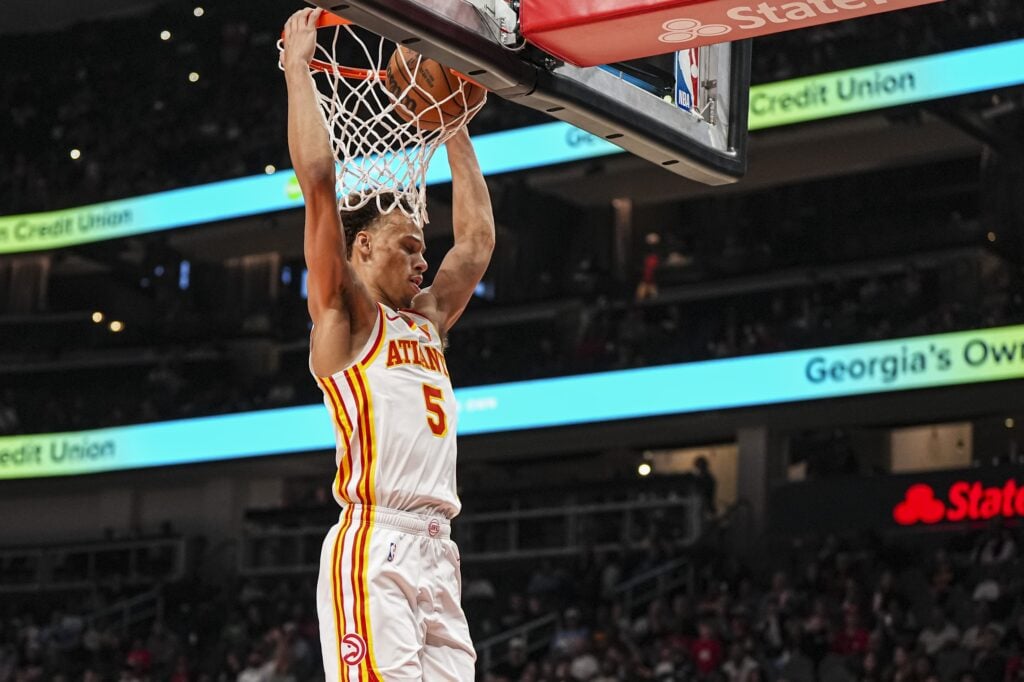Upon reflecting on the 2024-25 NBA season, there are plenty of fantasy basketball lessons and takeaways that managers can learn from for future drafts.
Fantasy Basketball Lessons From 2024-25
Beware of Good Draft Classes
A good draft class can make all the difference in how much teams tank. This season, teams gave up as early as February, thanks to names like Cooper Flagg, Dylan Harper, Ace Bailey and more headlining a stacked 2025 group. The race to the bottom was on as teams such as the Utah Jazz, Washington Wizards, Charlotte Hornets and Toronto Raptors rested their top players to increase their chances of landing the first overall pick. Why else would 23-year-old Walker Kessler need to sit out a game for “rest?”
The 2024 class had no significant prospects. While that didn’t stop teams from tanking, it didn’t occur as soon as it did this season and to this extent. The 2026 NBA draft is already touted to have some high-potential players, but it isn’t considered as strong as this year’s.
Tanking is inevitable, but teams are more incentivized to lose if the upcoming rookie class is a gold mine. To limit the silly season shenanigans, consider avoiding drafting players from bad teams or trading them when their value is high, before the chaos ensues. Even target young players or rookies who are likely to receive more playing time in the latter half of the season. Tanking is also a good reminder to end your fantasy season sooner.
Have a Plan For Injuries
Aside from tanking, injuries were one of the biggest issues this season. Per injury analyst Jeff Stotts, his initial total of games missed due to injuries or illness was 6,779, the second-highest since 2005. Few fantasy teams were left unscathed, and many frustrated managers were left scrambling or gave up once the bug hit them.
Injuries certainly make it harder to win, but having a good plan in place still gives teams a chance. The most obvious strategy is to play the waiver wire. Looking at depth charts offers insight into who will be utilized more to replace an injured player. While it’s hard to replicate a star player’s production from a waiver pickup, this still helps compensate for some of the lost production. Also, stay updated with reports on the player’s recovery and know when it’s time to drop them. And take advantage of those IR/IL spots.
Read more on dealing with injuries in fantasy basketball.
Availability Is the 10th Category
Managers tend to only focus on the nine main categories when drafting. However, there’s a 10th one that goes a long way in helping win championships: availability.
Despite knowing about the injury risks of drafting Joel Embiid and the reports before the regular season started about his knee issues and availability, he still boasted a 12.1 ADP on Yahoo. The former first-overall fantasy player went on to play only 19 games and placed 271st in totals rankings.
Injuries are unpredictable, but considering a player’s health history and durability can help maximize the number of games played and prevent managers from wasting a high pick. Players like LaMelo Ball, Kawhi Leonard, Zion Williamson, etc., are riskier options. There’s still a chance they could suit up for the majority of games, as Anthony Davis did in 2023-24, but it’s worthwhile to factor in their availability.
Offseason Moves Can Hint At Risers and Fallers

The NBA offseason has tremendous fantasy basketball implications. Even a seemingly insignificant move can have big impacts.
The best example of this is Dyson Daniels. After getting minimal playing time on the New Orleans Pelicans, he had a massive role on the Atlanta Hawks when he was traded there. Moving Dejounte Murray opened a starting shooting guard job in Atlanta, with Daniels or Bogdan Bogdanovic expected to get the promotion. With an ADP of 136.3 and only going 35% drafted in Yahoo leagues, managers who took the chance on Daniels were pleasantly rewarded with a top-40 player.
Conversely, DeMar DeRozan’s trade to the Sacramento Kings hinted that he would fall down the rankings. Going from playing with one star on the Chicago Bulls to two in Sacramento was a warning sign. Sure enough, DeRozan dropped 36 spots.
While things don’t always go as expected, analyzing the trades and signings can help managers get ahead. Keep track of all the offseason moves, look at depth charts and consider who benefits and who suffers.
Patience Is A Virtue
It can be hard to hold players sometimes. Especially when they’re underperforming, going through a rough stretch, or just not getting the minutes.
Amen Thompson was stuck in a bench role for the first few months of 2024-25. He was averaging 26.8 minutes and didn’t have much fantasy value, leading many managers to drop him. That was until Jabari Smith Jr. broke his hand. For the rest of the year, Thompson’s playing time increased by nearly 10 MPG as he was promoted to the first unit. The sophomore had some scorching stretches and was a must-add.
Sometimes managers just have to be patient to avoid making the mistake of losing a good player. Once you drop, it’s hard to get them back. Give players some leeway, especially early in the season. That said, you also have to know when it’s time to move on.
Featured image: © Bill Streicher-Imagn Images
The post Fantasy Basketball Lessons and Takeaways From 2024-25 appeared first on Last Word On Basketball.